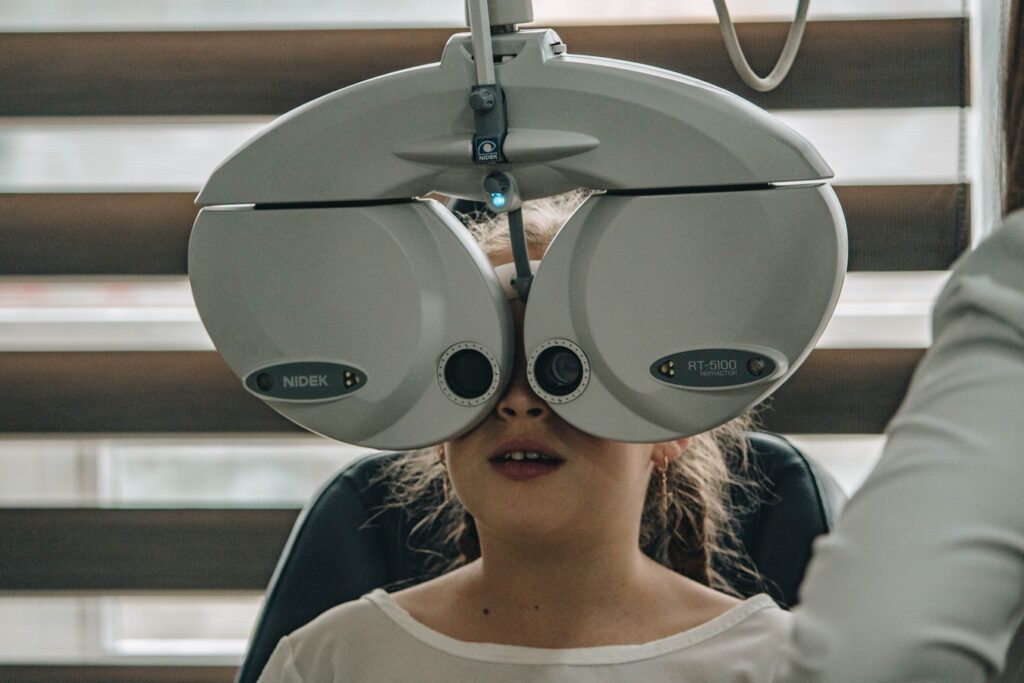With laser eye surgery (laser assisted in situ keratomileusis) treatment, your doctor produces a precise flap in the distinct, dome shaped part of your eye known as the cornea. In a laser eye surgery procedure, this’s through using a femtosecond laser rather than a scalpel. This corneal flap is folded back another laser reshapes the center level of the cornea of yours, correcting imperfections liable to your perception deficit. After the sculpting is completed, the flap is flipped back into place and your cornea usually heals within forty eight hours.
What’s PRK?
With PRK (photorefractive keratectomy), without corneal flap is created. Instead, the eye surgery on the cornea’s outer layer, sculpting it to fix vision deficiencies (known as refractive errors). Because no flap is produced, this particular treatment is determined by your organic eye to heal. Due to this particular recovery process is reduced and you might encounter a lot more discomfort in the first recovery process than laser eye surgery. In order to enhance recovery and decrease discomfort, your eye doctor inserts transient bandage contact lenses that remain in for 7 days. PRK is recommended in cases in which the cornea of yours might be way too slim to do laser eye surgery or perhaps in case you join in often in high contact sports.
Laser eye surgery has a typically high success rate and it is considered the safest elective surgical treatment on the planet today. Laser eye surgery itself doesn’t harm but with every other medical procedure, you will find specific risks related that you need to be conscious of, despite the fact that the likelihood of them occurring are small.
The typical complication rate across centers in the Uk is five % but several clinics are able to have higher rates so that you have to do the research of yours and get the clinics. You should know problems don’t mean the procedure failed, several complications might only be temporary problems that create a little pain (see below).

When Laser Eye Surgery Goes Wrong
There are a variety of problems which can develop from laser eye surgery. Thankfully, the risks of problems developing from laser eye surgery are incredibly small.
Partial loss of vision Description: The individual will lose a part of their perception permanently. This’s manifested by their failure to flip through a couple of lines on the eye chart.
Occurrence: This happens in one % of laser eye surgery patients and also will be the outcome of incorrect reshaping of the cornea or maybe harm to the eye from the laser beam. It is able to in addition be triggered by an allergic response to the anaesthetic eyedrops employed during the process.
Remedy: Unfortunately, there’s no treatment for this.
Higher-Order Aberrations
Description: These visual impairments are characterised by reduced perception in light that is low. The individual sees a glow around light sources or perhaps light radiating from them. This makes traveling at night risky for the patient.
Occurrence: This happens in o.5 to one % of individuals, especially among those with bigger pupils.
Remedy: This’s a temporary state, but can easily keep going as much as 6 months.
Ptosis
Description: This’s a problem where the top eyelid droops.
Occurrence: This’s incredibly rare. It might be brought on by the pressure applied to the eye during the process.
Remedy: This issue resolves itself after a two weeks. You will discover really rare cases of the state persisting; if this occurs, corrective surgery may be essential.
Infection
Description: The patient may suffer from corneal illness after the procedure.
Occurrence: This’s extremely rare, but may be caused by the cornea being susceptible to infection after the flap is produced. A report by the National Institute of Clinical Excellence () that is nice found just one in 5000 (0.02 %) individuals suffered from infection.
Remedy: The individual would be provided steroid eyedrops or maybe antibiotics for treating the infection.
Corneal Haze
Description: Corneal haze represents cloudy vision.
Occurrence: A mild amount of corneal haze is very popular which occurs because the cornea is nevertheless healing. Worse occurrences of haziness are unusual and research by the National Institute of Clinical Excellence () that is nice found just two % of individuals encountered the after refractive surgery.
Remedy: The haze disappears rapidly by itself, but occasionally the individual is given eyedrops to accelerate the recovery process of the cornea.
Dryness on the eye
Description: The medicated eye may have trouble producing tears, and that helps make the eyes dry, itchy and red. This can also create the eye prone to infections.
Occurrence: This’s a typical occurrence and it is because of the nervous feelings on the surface area of the eye having been cut.
Remedy: Dryness of the eye is transient, but may be relieved by utilizing oil eyedrops which will assist the eye make artificial tears.
Astigmatism
Description: Astigmatism is an ailment brought on by problems in the corneal shape which will make the affected person get off track in parts of the vision of theirs.
Occurrence: This complication hardly ever occurs and it is brought on by reshaping mistakes on the cornea.
Remedy: If the individual ‘s cornea is heavy enough, corrective laser eye surgery could be done on it. If it wasn’t, the patient is going to have to use corrective lenses or even glasses.

Sub-Conjunctival Haemorrhage
Description: The patient ‘s eye turns white, indicating bleeding.
Occurrence: This’s an additional exceptional complication, and also comes from the stress out of the suction when the corneal flap is created. The blood vessels become damaged plus the blood flows in the area between the sclera – the white portion of the eye and the conjunctiva, the coating of the sclera. This will make the eye red.
Remedy: This typically resolves itself within a couple of weeks.
Corneal Estasia
Description: The cornea bulges out and flattens out. This may ultimately result in blindness, if left untreated.
Occurrence: The likelihood of this going on in a laser eye surgery affected person is under 0.2 %. It results from an excessive amount of tissue having been taken out of the cornea, rendering it incredibly vulnerable.
Remedy: The individual will be provided strict contact lenses to help reinforce the cornea. In cases that are extreme, a corneal transplant is essential.
The best way to minimise the chances of laser eye surgery
As a laser eye surgery patient, you will find specific actions you are able to take to ensure that the procedure of yours would be effective which the chances of yours of experiencing any complications are maintained at a minimal.
Research almost as you can into the procedure of yours.
Find out exactly how it’ll be taken away, what you need to assume with each step of the procedure, and also what success rates along with risks are connected with it, along with everything you are able to do to reduce those risks.
Select a clinic with a good reputation.
Ask each clinic you consider for its success rate along with its complication rate. The national average complication rate following laser eye surgery is a bit less compared to five %, as ensure that the center rate you go will not enjoy a complication rate above this particular figure. A center that is reluctant to disclose its complication rate would not be truly worth your consideration and time.
An alternate way to evaluate the competence of a center is reading patients’ ratings in independent sites. Look at what individuals that have undergone similar process you are intending to have say about the center – the way they had been dealt with not merely by the doctor, but by some other people of the employees also. What degree of aftercare did they receive? If they’d complications, did the center do something to fix these?

